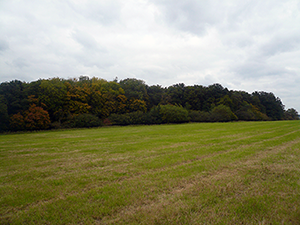Phase 1 Desk Study for a Change of Use from Commercial to Residential Property
We were commissioned to undertake an EnviroSmart Report to satisfy a condition imposed by the local planning authority.
The scope of the application was a change of use from commercial to residential property. The developer wished to convert the upper two storeys of a former office building into residential flats.
Following best practice the local planning officer wanted to understand if the change of use impacted on the receptors (including residents) as the building would be populated at different times and with greater frequency. The end use is classed as being more sensitive.
The Challenge
The site is located in a complex setting consisting of a mixed residential and industrial area and thus the report needed to fully understand the potential impact from neighbouring properties.
The site itself was formerly an industrial building used for the manufacture of clocks and more recently used as offices.
It was felt important to engage with the Contaminated Land Officer at the local planning office to ensure that the recommendations in Envirep’s report were well informed and addressed any specific issues.
Our Approach
A study of historic maps was completed to establish the past land use, not only for the site but also the surrounding area. The purpose of the study was to identify if there may have been a historic threat of contamination from neighbouring land use.
The data indicated that previously a large house had been located on the site which was demolished during the 1930s and the current building was developed around this time.
This information indicated a risk from made ground beneath the premises. However, as the building was not being demolished and the planning was only to convert the upper two floors, the threat was considered to be low.
A moderate to low risk was identified to the underlying aquifer. However, the likelihood of contamination to groundwater was deemed negligible due to the site’s complete coverage of hard standing.
A full review of environmental data sets was conducted and an overall risk assessment compiled to establish the threat to individual receptors. Once the possible sources of contamination and the receptors were established the contaminant pathways were reviewed to ascertain if a linkage was present.
Potential risks of contamination within the fabric of the building and surrounding grounds existed from the building’s original industrial use and the materials used in its construction.
The Contaminated Land Officer at the local planning office was contacted to identify any concerns they might have with the site.
The Result
The conclusion was that the site was moderate / low risk, leading to a recommendation that no further assessments (including any intrusive investigations) of the site were deemed necessary in relation to the proposed refurbishment. The client went on to oversee the successful development of the site.
Our EnviroSmart Report delivers best value and clarity for more informed decisions and is available for just £995 plus VAT.



